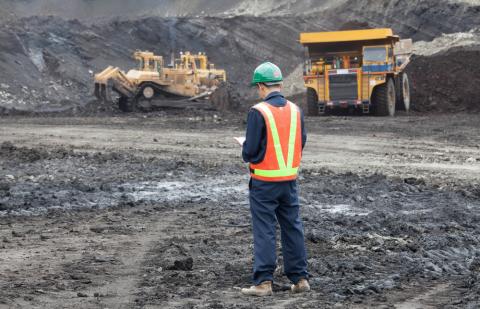As Foreign Coal Adventures Sour, a Realization That Energy Security Starts at Home
For much of the past decade it’s been standard fare for Indian companies—both privately and publicly-owned—to promote investments in overseas coal projects in the expectation that they would supply cheap coal to coastal power plants in India.
The thinking was that as international coal prices rose and as domestic supply constraints developed, India’s energy security would require deals on yet-to-be-developed coal projects in Indonesia, Mozambique and Australia. Indian power generation companies decided, as a result, that the best business strategy was to buy distant coal mines to supply their own plants. “Backward integration” as the National Thermal Power Corp., which provides a quarter of India’s electricity, described it.
High coal prices would justify big debt loads to buy assets, expand existing projects or build the infrastructure to get new coal mines connected to global markets. The unstated ethos of the high-rolling coal companies seemed to be “what could possibly go wrong?”
Plenty as it turned out—mostly the fact that the price of coal has tanked and global seaborne markets are glutted.
A good case in point of intentions gone awry is Coal India’s scheme in Mozambique, which dates back to May 2006, when the governments of Mozambique and India made a deal smoothing the way for an April 2009 exploration-rights go-ahead to Coal India over two coal blocks in the Tete province in Mozambique.
Coal India had high hopes, stating that it would “start mining the block within six months” and proclaiming that “preliminary surveys” suggested the areas contained “1 billion tonnes (metric tons)” of coal. Two years later, Coal India’s Mozambique subsidiary, Coal India Africana Limitada, said it wasn’t working out, however, because it had no way of getting the coal to market. And without a viable railway, the company said it was reluctant to spend money on social programs it had promised the Mozambique government as part of the deal.
BY 2012, THE MOZAMBICAN GOVERNMENT WAS INSISTING THOSE SOCIAL-PROGRAM COMMITMENTS BE HONORED BY COAL INDIA, which agreed the following year to spend US$42 million on such programs, which included industrial vocational training. But by then, the commencement date for the project had slipped to 2015—and that was assuming the export infrastructure existed. But before long the 2015 commissioning date had become 2016-2017, which of course means the project still hasn’t happened.
A raft of other Indian companies—including Adani, Reliance Power, Jindal, Lanco and GVK—have similar stories to tell about overseas coal adventures spanning Indonesia, Mozambique and Australia.
Adani’s Carmichael mine project may be the best publicized of the lot, a pie-in-the sky plan that faced huge community opposition that has coincided with the downturn in the global thermal coal market. Adani has the support of state and federal Australian governments, but can’t find the bank friends it needs to get the project in motion. Reliance Power has announced its wants to dump its Indonesian coal prospects and focus on solar power in India. Jindal has been losing money hand over fist at its Mozambique mine. And debt-laden Lanco and GVK have blown hundreds of millions on thermal coal projects in Australia which are going nowhere.
NTPC, too, has recent experience with foreign coal projects going sour. One of them stems from an August 2010 NTPC memo of understanding with the Bangladesh Power Development Board to develop the 1,320-megawatt Rampal power plant near the Sundarbans World Heritage Area. The project ran into strong opposition from local communities, it has been challenged in the courts, and it has driven the Norwegian sovereign wealth fund to divest from NTPC.
Such projects are all emblematic of a fast-changing global energy economy in which coal has fallen out of favor with investors, insurers and international banks. The market is now so oversupplied that new projects are redundant and—especially where they require costly new infrastructure such as railways and ports—hopelessly uncompetitive.
Some players, to their credit, are taking notice. NTPC recently hired KPMG to revise its long-term corporate plan to take into account market-shifting changes like the Indian government’s ambitious push to increase renewable power supply—solar in particular. And NTPC itself has plans now to install 10,000 megawatts of utility-scale solar capacity and to buy power from 15,000 megawatts of privately owned solar capacity.
Indeed solar costs are falling so fast that Deutsche Bank now puts solar in India at “grid parity” and Indian solar auctions now price solar power well below the cost of electricity fired by imported coal.
Where the notion of energy security a decade ago had countries like India scouring the globe and stitching up deals for potential coal, oil and gas deposits abroad, it now revolves around more effectively harnessing freely available sun and wind in their own back yards.
The growing realization, it seems, is that energy security starts at home.
Bob Burton is the editor of CoalWire.












